Climate change possess a growing threat to our global food security. To combat its effects, we must embrace climate-smart agriculture, and a crucial aspect of this approach is adopting climate-resilient crop varieties. These crops are uniquely adapted to withstand the challenges of a changing climate. In this blog, we’ll delve into why you should consider these remarkable crops and how they help ensure a more sustainable and secure food supply for the future.
Climate-Resilient Crop Varieties
What Is Climate-Resilient Crop Varieties?
Climate-resilient crop varieties are specially bred-plants that possess a remarkable ability to thrive in the face of climate change. These crops have been meticulously developed through traditional breeding methods, selecting traits that enable them to stand extreme weather conditions, such as droughts, floods, and temperature fluctuations. They’re like nature’s superheroes, equipped to combat the challenges our changing climate throws them. These resilient crops offer a safety net for our food supply, even in the harshest conditions.
Climate-Resilient Crop Varieties: A Lifeline for Agriculture
In the relentless battle against climate change and malnutrition, the Indian Council of Agricultural Research has crafted 35 remarkable crop varieties. These plants are not your ordinary crops; they are superheroes of the agricultural world, equipped to combat the effects of a changing climate. These climate-resilient varieties are designed to thrive in harsh conditions, making them essential in ensuring food security and good nutrition.
Varieties That Stand Strong: These specially developed crops include drought-tolerant chickpeas, early-maturing soybeans, disease-resistant strains of rice, pigeon pea resistant to wilt and sterility mosaic, and biofortified versions of wheat, pearl millet, maize, and chickpea. The lineup even features unconventional gems like quinoa, buckwheat, winged bean, and faba bean.
Climate Change’s Impact on Agriculture: The recent report of the Intergovernmental Panel on Climate Change states the far-reaching consequences of climate change, including shifting monsoons, rising sea levels, deadly heatwaves, storms, and floods. These changes pose a severe risk to agriculture, making the need for climate-resilient crops even more critical.
The Quest for Resilient Crops: In response to these challenges, the National Innovations in Climate Resilient Agriculture was launched in 2011. Through research and technology demonstrations, the ICAR-led project aims to increase crop resilience by concentrating not only on crop yield but also on tolerance to diseases, pests, drought, salinity, and flooding.
Addressing Anti-Nutritional Factors: Additionally, these particular crop varieties tackle anti-nutritional factors, substances that can harm human and animal health. Some examples are plants that do not have a lot of erucic acid and glucosinolates and soybean varieties that do not have any Kunitz trypsin inhibitor or lipoxygenase.
Climate-Resilient Rice Varieties for India’s Farmers
Climate-resilient rice varieties can withstand drought, flood, saltwater intrusion, and extreme weather events. They are either created by scientists or preserved by farmers using local landraces. These varieties have higher nutrition profiles and yield potential than conventional rice. Some examples of climate-resilient rice varieties for India’s farmers are Sahbhagi dhan, Swarna Shreya, Bina dhan 11, and Swarna sub 1. These varieties can help improve food security and income in the face of climate change.
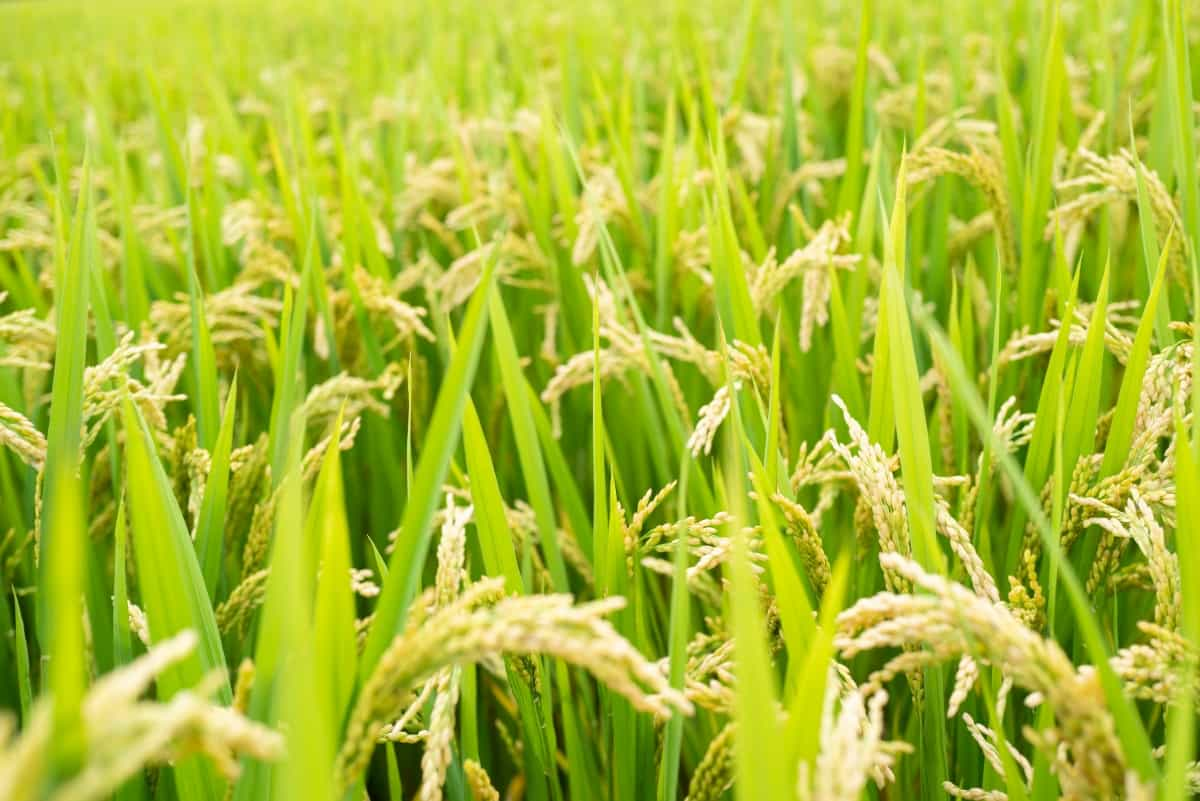
Heat-Tolerant Rice Varieties for India’s Hot Climate
Heat-tolerant rice varieties are essential for India’s hot climate, where high temperatures can reduce the yield and quality of rice crops. Some rice varieties developed or identified as heat-tolerant are Nagina22, KMR3, and Buro. These varieties can withstand temperatures above 35°C and have a lower heat susceptibility index (HSI) than popular varieties like BPT5204 and Vandana. Heat-tolerant rice varieties can help farmers cope with climate change and ensure food security in India.
Drought-Tolerant Rice Varieties for Water-Scarce Regions in India
Drought-tolerant rice varieties, such as Sahbhagi Dhan, DRR Dhan 42, DRR Dhan 43, and DRR Dhan 44, improve food security and livelihoods in rainfed areas. These varieties, bred using marker-assisted selection, have an average yield advantage of 1.0-1.5 tons per hectare over drought-susceptible ones. These varieties are crucial for improving food security and livelihoods in rainfed areas.
Saline-Tolerant Rice Varieties for Coastal Regions
Saline-tolerant rice varieties thrive in high salt content soils, a challenge rice cultivation faces in coastal Asia due to increased salt levels from seawater intrusion, storm surges, and droughts. Scientists have developed saline-tolerant rice varieties, such as Salinas 1, Salinas 9, Goa Dhan-1, Goa Dhan-2, Goa Dhan-3, and Goa Dhan-4, which can withstand up to 0.3% salt levels and can withstand submergence and other stresses.
Climate-Resilient, Heat-Tolerant, and Drought-Tolerant Wheat Varieties for India’s Farmers
Wheat is one of the most important staple crops in India, but it is also sensitive to high temperatures and water stress. To address this challenge, scientists have developed heat-tolerant and drought-tolerant wheat varieties that can perform well in India’s hot and dry regions.
In case you missed it: Climate-Smart Agricultural Methods for More Yields and High Profits
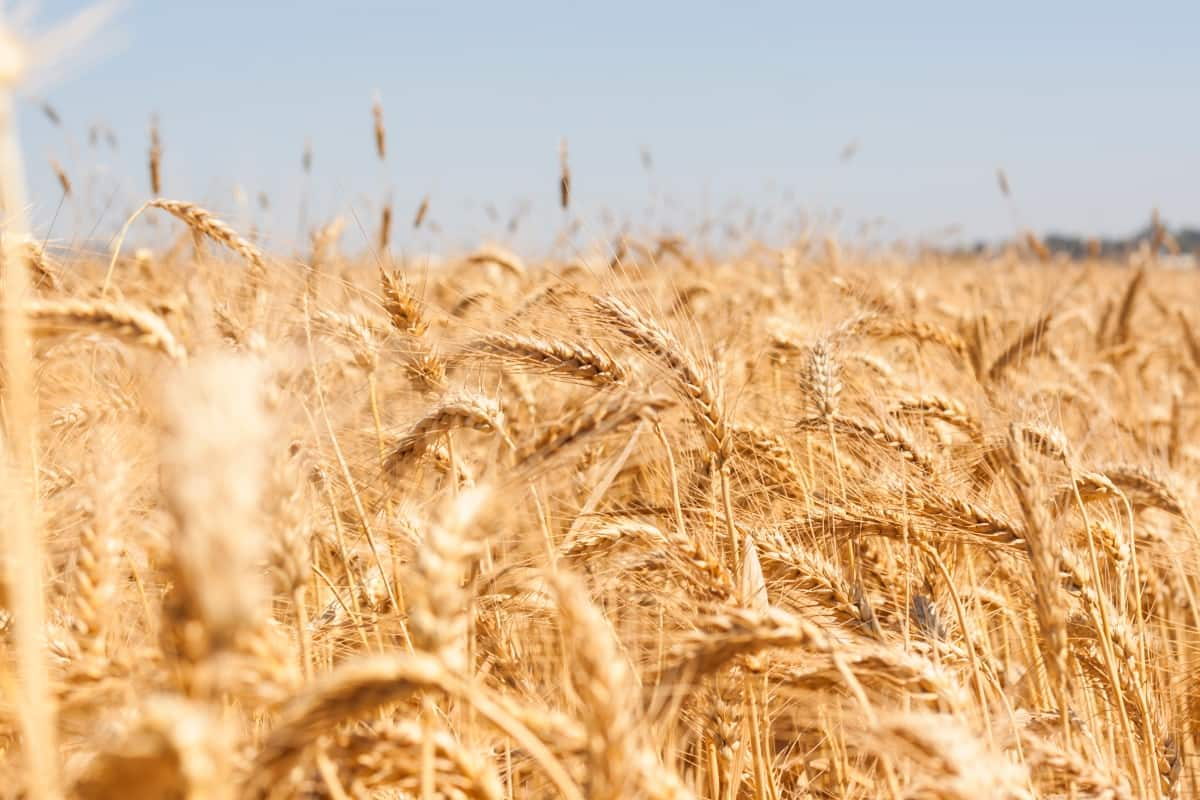
For example, HD 3226 is a heat-tolerant wheat variety that can yield up to 5.6 tonnes per hectare under high temperatures. Similarly, DBW 187 is a drought-tolerant wheat variety that can produce up to 6.5 tonnes per hectare under water-limited conditions. These varieties can help farmers increase their productivity and income in the face of climate change.
Saline-Tolerant Wheat Varieties for Coastal Regions
Another challenge for wheat cultivation in India is soil salinity, especially in the coastal regions. Salinity reduces the growth and yield of wheat plants by affecting their water uptake and nutrient absorption. To overcome this problem, scientists have developed saline-tolerant wheat varieties that can tolerate high salt levels in the soil. For instance, KRL 283 is a saline-tolerant wheat variety that can yield up to 4.8 tonnes per hectare in saline soils.
Climate-Resilient, Heat-Tolerant, Drought-Tolerant Maize Varieties for India’s Farmers
Maize is another important crop in India, especially for animal feed and food processing industries. However, maize is also vulnerable to heat and drought stress, which can reduce its yield and quality. To cope with this issue, scientists have developed heat-tolerant and drought-tolerant maize varieties that can adapt to India’s hot and dry climate.
In case you missed it: How to Unlock Key Technologies to Improve Food Security: Reduce Pesticide Use and Enhance Crop Climate-Resilience
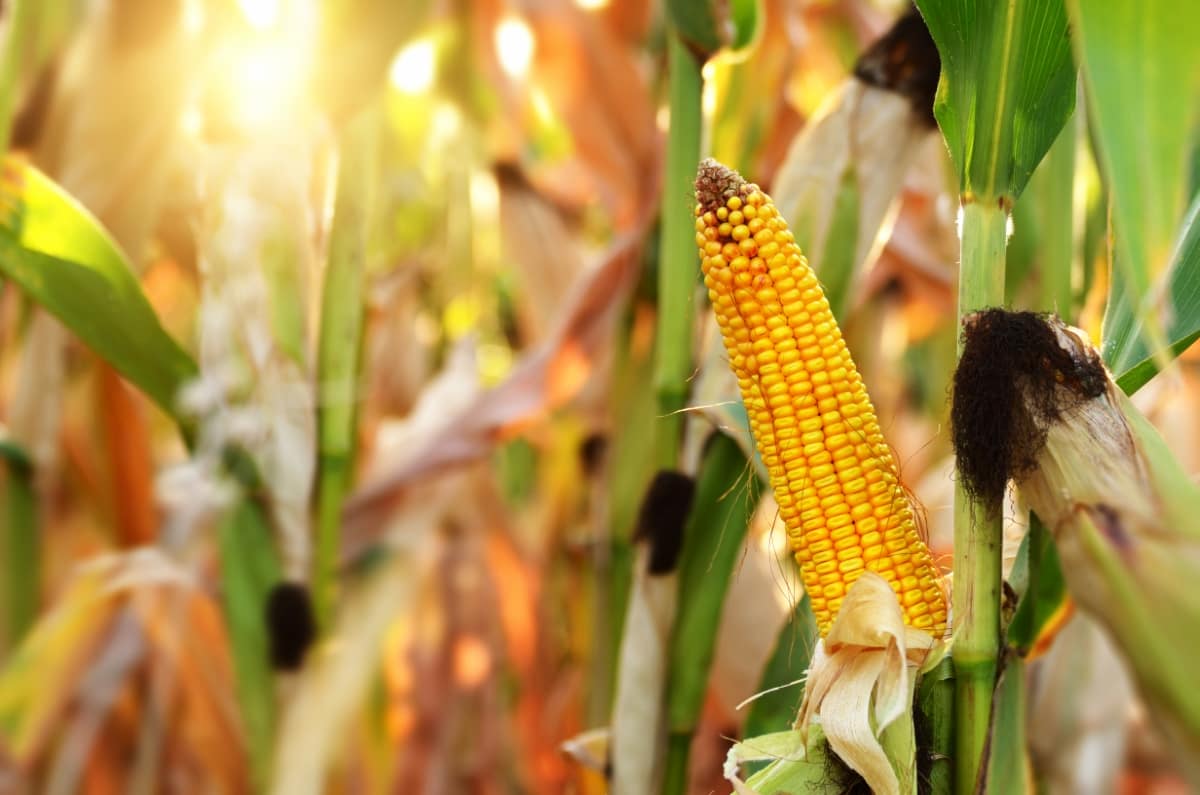
For example, HQPM 7 is a heat-tolerant maize variety that can yield up to 7 tonnes per hectare under high-temperature conditions. Likewise, PMH 14 is a drought-tolerant maize variety that can produce up to 6 tonnes per hectare under water-scarce conditions. These varieties can help farmers enhance their maize production and profitability in the face of climate change.
Saline-Tolerant Maize Varieties for Coastal Regions
Maize also faces the problem of soil salinity in some parts of India. Salinity affects the germination and growth of maize plants mainly by causing osmotic stress and ion toxicity. To solve this problem, scientists have developed saline-tolerant maize varieties that can grow well in saline soils. For example, Pusa Hybrid Makka 3 is a saline-tolerant maize variety that can yield up to 5 tonnes per hectare in salty soils.
Climate-Resilient, Heat-Tolerant, and Drought-Tolerant Soybean Varieties for India’s Farmers
Soybean is a major oilseed crop in India, but it is also susceptible to heat and drought stress. Heat stress affects the flowering and pod setting of soybean plants, while drought stress affects the seed filling and oil content. To address this challenge, scientists have developed heat-tolerant and drought-tolerant soybean varieties that can thrive in India’s hot and dry climate.
In case you missed it: Effects of Climate Change on Agriculture in India

For example, JS 335 is a heat-tolerant soybean variety that can yield up to 2.5 tonnes per hectare under high-temperature conditions. Similarly, MACS 1242 is a drought-tolerant soybean variety that can produce up to 2 tonnes per hectare under water-limited conditions. These varieties can help farmers improve their soybean production and quality in the face of climate change.
Climate-Resilient Oilseed Varieties for India’s Farmers
Oilseeds are another critical group of crops in India, providing edible oils and animal feed. However, oilseeds are also prone to heat and drought stress, affecting their yield and oil content. To cope with this issue, scientists have developed climate-resilient oilseed varieties that can withstand the adverse effects of climate change.
In case you missed it: Ways to Use Neem Oil in Plants: Benefits in Agriculture, Application Method in Garden, and Uses in Hydroponics
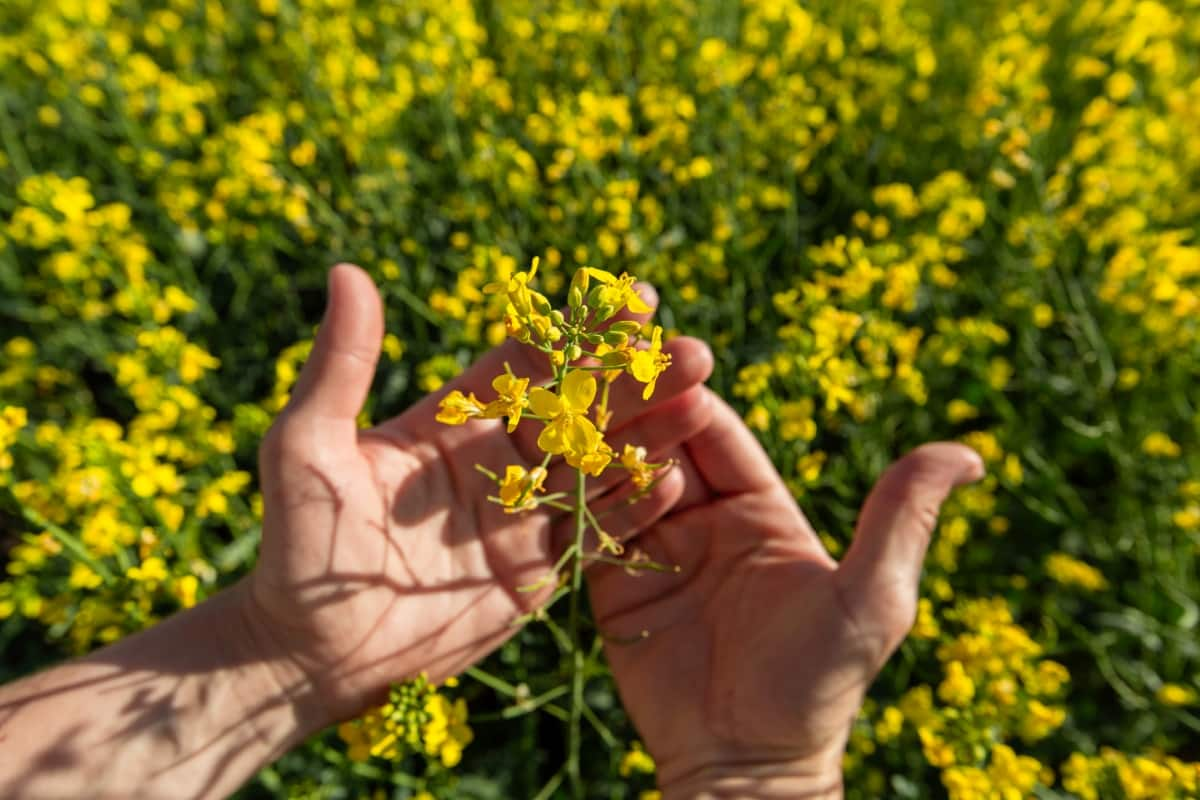
For example, NRCHB 506 is a climate-resilient mustard variety that can yield up to 2 tonnes per hectare under varying climatic conditions. Likewise, NRCG-06-02 is a climate-resilient groundnut variety that can produce up to 3 tonnes per hectare under different climatic conditions. These varieties can help farmers increase their oilseed production and income in the face of climate change.
Climate-Resilient Pulses Varieties for India’s Farmers
Pulses are another critical group of crops in India, providing protein and nitrogen fixation for the soil. However, pulses are also sensitive to heat and drought stress, which can affect their yield and quality. To overcome this problem, scientists have developed climate-resilient pulse varieties that adapt to India’s hot and dry climate.
In case you missed it: Post-Harvest Technology of Cereals, Pulses, and Oilseeds
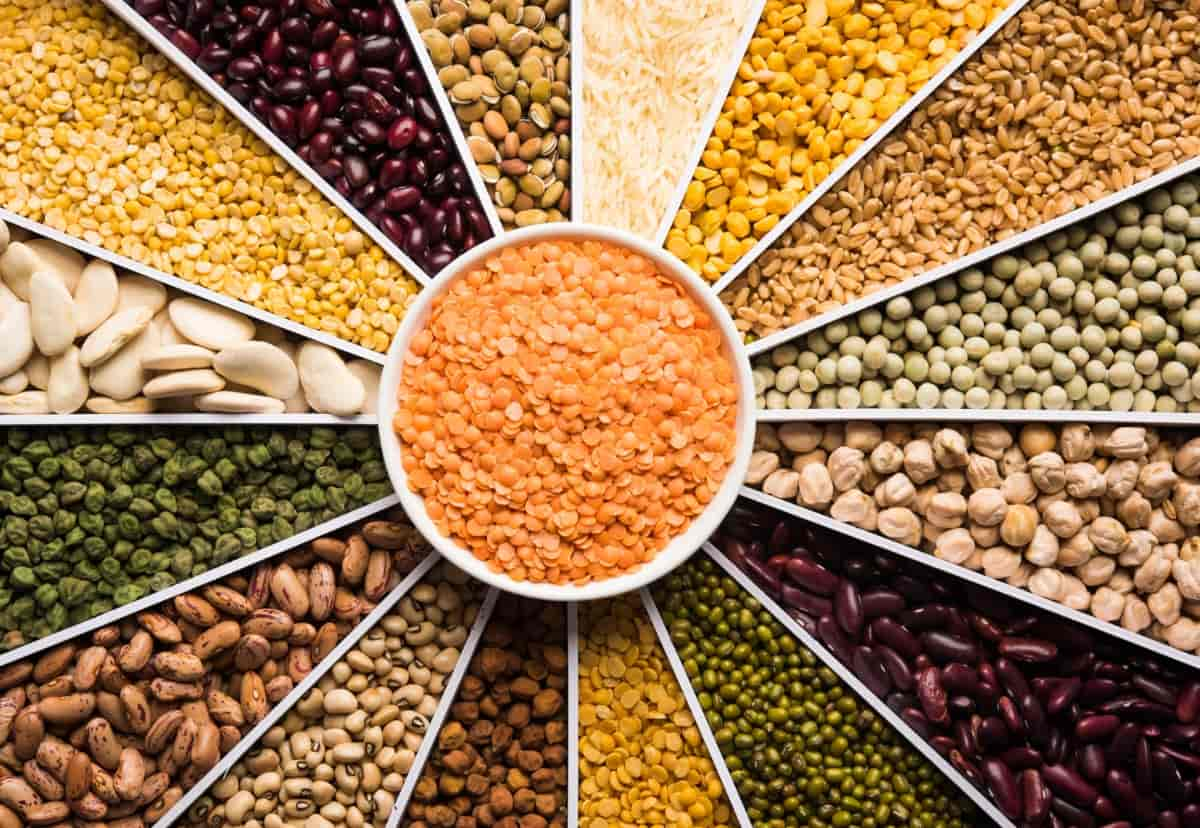
For example, Pusa 16 is a climate-resilient chickpea variety that can yield up to 2 tonnes per hectare under varying climatic conditions. Similarly, Pusa 992 is a climate-resilient pigeon pea variety that can produce up to 1.5 tonnes per hectare under different climatic conditions.
Pest and Disease-Resistant Crop Varieties for Indian Agriculture
Pest and disease-resistant crop varieties in Indian agriculture as they offer a multi-faceted solution to challenges. These resilient crops reduce crop losses, minimizing the need for pesticide applications and lowering the environmental footprint of farming practices.
Chickpea: The drought-tolerant chickpea variety stands strong against water stress, a common issue in India’s diverse climatic regions. This resilience not only ensures better yields but also reduces water consumption, making it a sustainable choice for farmers.
Pigeonpea: Pigeonpea has been fortified with resistance against wilt and sterility mosaic diseases caused by fungi and viruses. By withstanding these threats, this variety significantly enhances productivity and lowers the risk of crop failure.
Soybean: Early maturing soybean varieties are a game-changer. Their ability to develop swiftly allows them to escape the clutches of drought and pests. Moreover, their adaptability to multiple cropping systems makes them versatile and valuable in Indian agriculture.
Rice: Disease-resistant rice varieties combat bacterial blight, blast, and brown plant hopper. These traits ensure a more secure rice harvest, a staple food for millions in India.
Wheat, Pearl Millet, Maize, and Chickpea: These biofortified varieties are champions in improving human nutrition. With elevated levels of iron, zinc, and protein, they address malnutrition and related health concerns, offering a win-win solution for farmers and consumers.
Climate-Resilient Crop Varieties in India
| Crop | Variety | Special Features | Climate-Resilient Type |
| Buckwheat | Him Phaphra | High protein (13.1%) with methionine and iron (6.6 mg/100g) | Nutrient-Rich |
| Chickpea | Pusa Chickpea 4005 | Drought Tolerant | Drought |
| Chickpea | IPCMB 19-3 (Samriddhi) | Fusarium wilt resistant high protein (22.9%) | Pest & Nutrient-Rich |
| Faba bean | HFB 2 | High seed yield and protein content (24.13%) | Nutrient-Rich |
| Maize | Pusa HQPM-1 Improved (APQH-1) | High provitamin, lysine (4.59%) and tryptophan (0.85%) | Nutrient-Rich |
| Maize | Pusa Biofortified Maize Hybrid-1 (APH-1) | Rich in provitamin-A (6.6 μg/g), lysine (3.37%) and tryptophan (0.72%) | Nutrient-Rich |
| Mustard | Pusa Duble Zero Mustard 33 | High yielding (26.4 q/ha) with Canola quality | Nutrient-Rich |
| Mustard | RCH 1 | High yielding (26.7 q/ha) hybrid with Canola quality | Nutrient-Rich |
| Pearl millet | PB 1877 | Rich in Iron (42 ppm) and zinc (32 ppm) | Nutrient-Rich |
| Pearl millet | HHB 67 Improved 2 | Rich in Iron (42 ppm) and zinc (32 ppm) and downy mildew resistant | Nutrient-Rich & Pest |
| Pigeonpea | IPH 15-3 | Early maturing and resistant to wilt and sterility and mosaic disease | Pest & Drought |
| Pigeonpea | IPH 09-5 | Early maturing and resistant to wilt and sterility and mosaic disease | Pest & Drought |
| Quinoa | Him Shakti | High protein content (15.64%) and oil (8.91%) | Nutrient-Rich |
| Rice | DRR Dhan 58 | Resistant to bacterial blight and seedling stage salinity tolerance | Pest & Salinity |
| Rice | DRR Dhan 59 | Resistant to bacterial blight | Pest |
| Rice | DRR Dhan 60 | Resistant to bacterial blight and low soil phosphorus tolerance | Pest & Salinity |
| Rice | Pusa Basmati 1847 | Bacterial blight and blast resistance | Pest |
| Rice | Pusa Basmati 1885 | Bacterial blight and blast resistance | Pest |
| Rice | Pusa Basmati 1886 | Bacterial blight and blast resistance | Pest |
| Rice | Pusa Basmati 1979 | Herbicide tolerance | Pest |
| Rice | Pusa Basmati 1985 | Herbicide tolerance | Pest |
| Sorghum | CSH 47 (SPG 1798) | High biomass variety suitable for 2G biofuel and silage making | Drought |
| Sorghum | Jaicar Raseela-CSV 49SS (SPV 2600) | Sweet sorghum suitable for 1G biofuel and silage making | Drought & Heat |
| Sorghum | JaicarUrja-CSV 48 (SPV 2402) | High biomass variety suitable for 2G biofuel and silage making | Drought & Heat |
| Soybean | KBVS 1 (Karune) | Green pod suitable for consumption | – |
| Soybean | NRC 138 | Early maturing amenable to mechanical harvesting | – |
| Soybean | NRC 142 | Double null variety free from anti-nutritional factors | Nutrient-Rich |
Conclusion
In the face of climate change, embracing climate-resilient crop varieties is not just an option; it’s a necessity. These crops offer a lifeline to our food security, reducing the impact of extreme weather events and ensuring sustainable yields. By choosing climate-smart agriculture, we invest in a more secure and resilient future for agriculture, safeguarding our food supply and the well-being of generations to come.
- How to Build a Low-budget Goat Shed: Cheap Ideas and Tips
- Goat Farming Training Programs in India: A Beginner’s Guide
- Types of Pesticides Used in Agriculture: A Beginner’s Guide
- Economical Aquaculture: A Guide to Low-Budget Fish Farming
- 15 Common Planting Errors That Can Doom Your Fruit Trees
- How to Make Houseplants Bushy: Effective Tips and Ideas
- Innovative Strategies for Boosting Coconut Pollination and Yield
- Pollination Strategies for Maximum Pumpkin Yield
- The Complete Guide to Chicken Fattening: Strategies for Maximum Growth
- Natural Solutions for Tulip Problems: 100% Effective Remedies for Leaf and Bulb-Related Issues
- Revolutionizing Citrus Preservation: Towards a Healthier, Greener Future
- Natural Solutions for Peony Leaf and Flower Problems: 100% Effective Remedies
- Maximizing Profits with Avocado Contract Farming in India: A Comprehensive Guide
- Natural Solutions for Hydrangea Problems: 100% Effective Remedies for Leaf and Flowers
- The Ultimate Guide to Choosing the Perfect Foliage Friend: Bringing Life Indoors
- From Sunlight to Sustainability: 15 Ways to Use Solar Technology in Agriculture
- The Ultimate Guide to Dong Tao Chicken: Exploring from History to Raising
- The Eco-Friendly Makeover: How to Convert Your Unused Swimming Pool into a Fish Pond
- Mastering the Art of Delaware Chicken Farming: Essentials for Healthy Backyard Flocks
- 20 Best Homemade Fertilizers for Money Plant: DIY Recipes and Application Methods
- How to Craft a Comprehensive Free-Range Chicken Farming Business Plan
- Brighten Your Flock: Raising Easter Egger Chickens for Beauty and Bounty
- How to Optimize Your Poultry Egg Farm Business Plan with These Strategies
- Subsidy for Spirulina Cultivation: How Indian Government Schemes Encouraging Spirulina Farmers
- Ultimate Guide to Raising Dominique Chickens: Breeding, Feeding, Egg-Production, and Care
- Mastering the Art of Raising Jersey Giant Chickens: Care, Feeding, and More
- Ultimate Guide to Raising Legbar Chickens: Breeding, Farming Practices, Diet, Egg-Production
- How to Raise Welsummer Chickens: A Comprehensive Guide for Beginners
- How to Protect Indoor Plants in Winter: A Comprehensive Guide
- Ultimate Guide to Grow Bag Gardening: Tips, Tricks, and Planting Ideas for Urban Gardeners
- Guide to Lotus Cultivation: How to Propagate, Plant, Grow, Care, Cost, and Profit
- Agriculture Drone Subsidy Scheme: Government Kisan Subsidy, License, and How to Apply Online
- Ultimate Guide to Raising Araucana Chickens: Breed Profile, Farming Economics, Diet, and Care
- Bringing Hydroponics to Classroom: Importance, Benefits of Learning for School Students
- Ultimate Guide to Raising Polish Chickens: Breed Profile, Farming Economics, Diet, and Care
- Ultimate Guide to Raising Australorp Chickens: Profile, Farming Economics, Egg Production, Diet, and Care